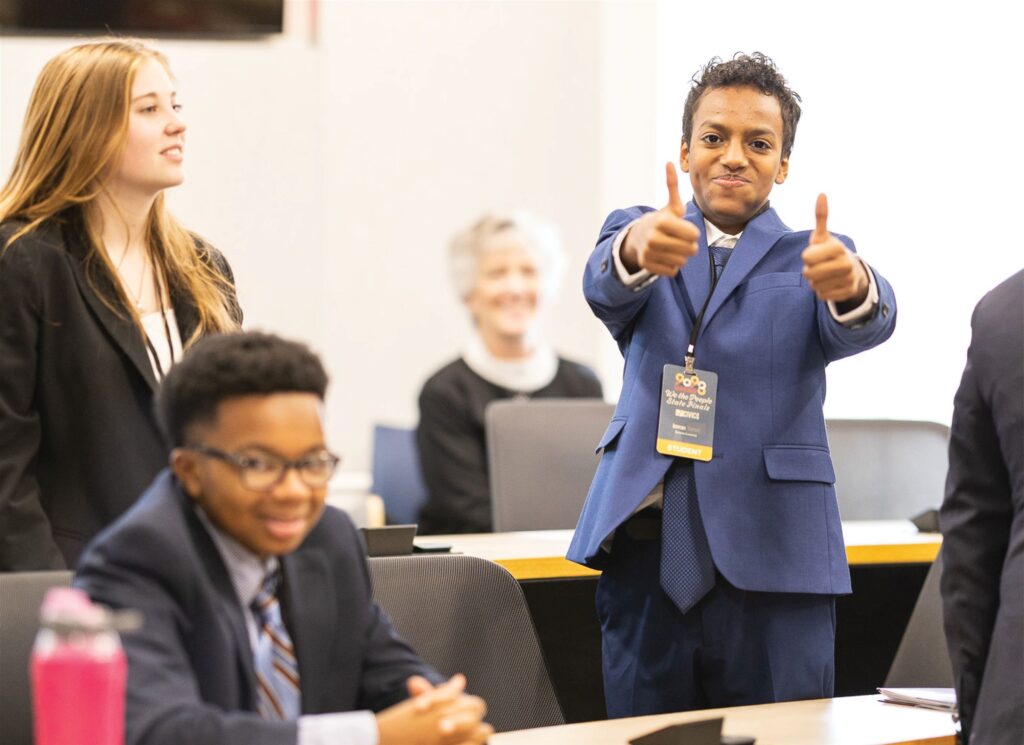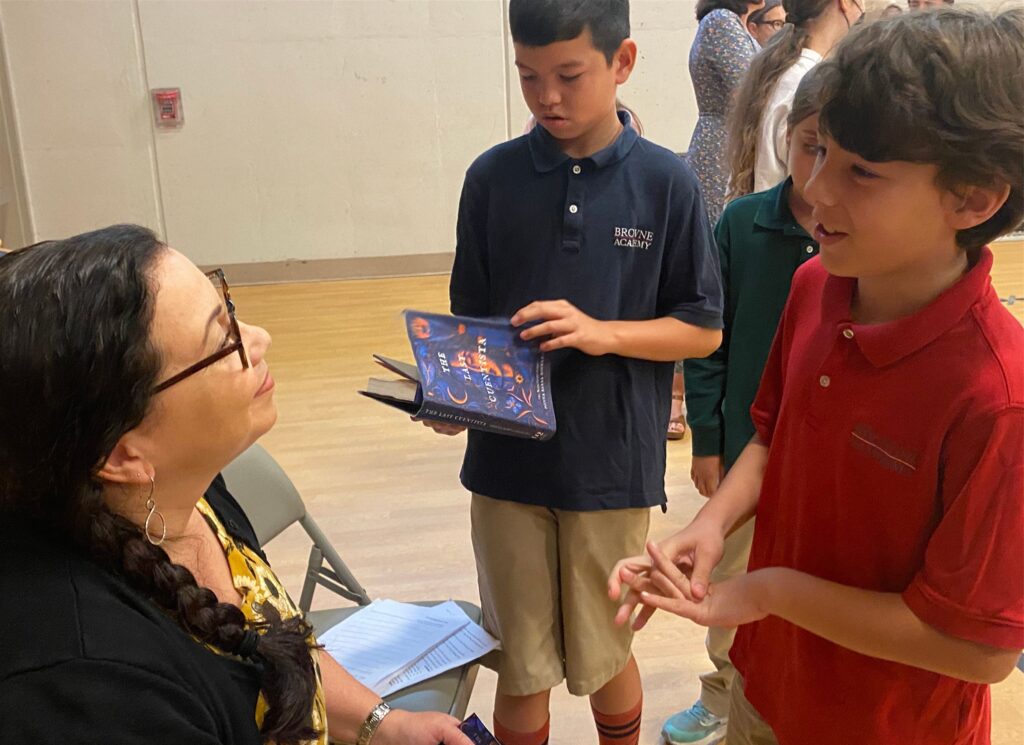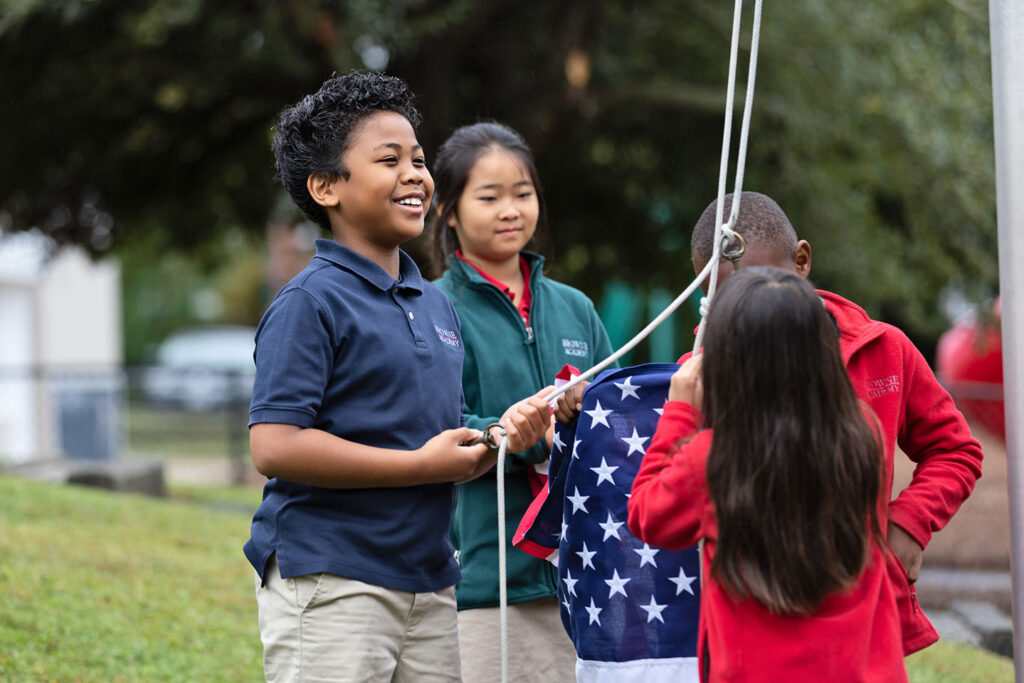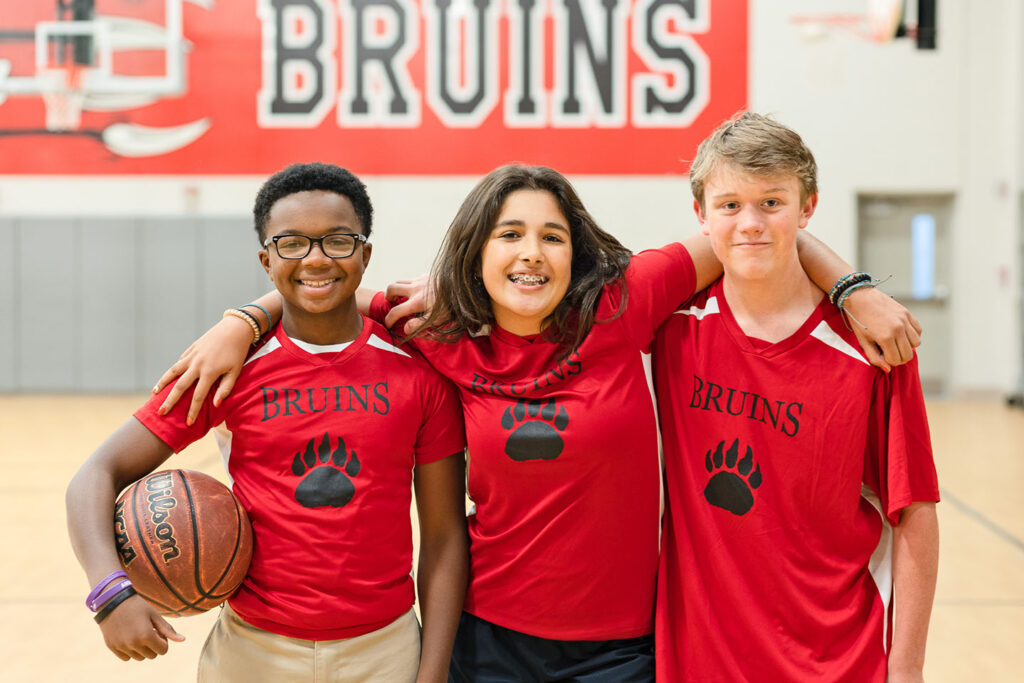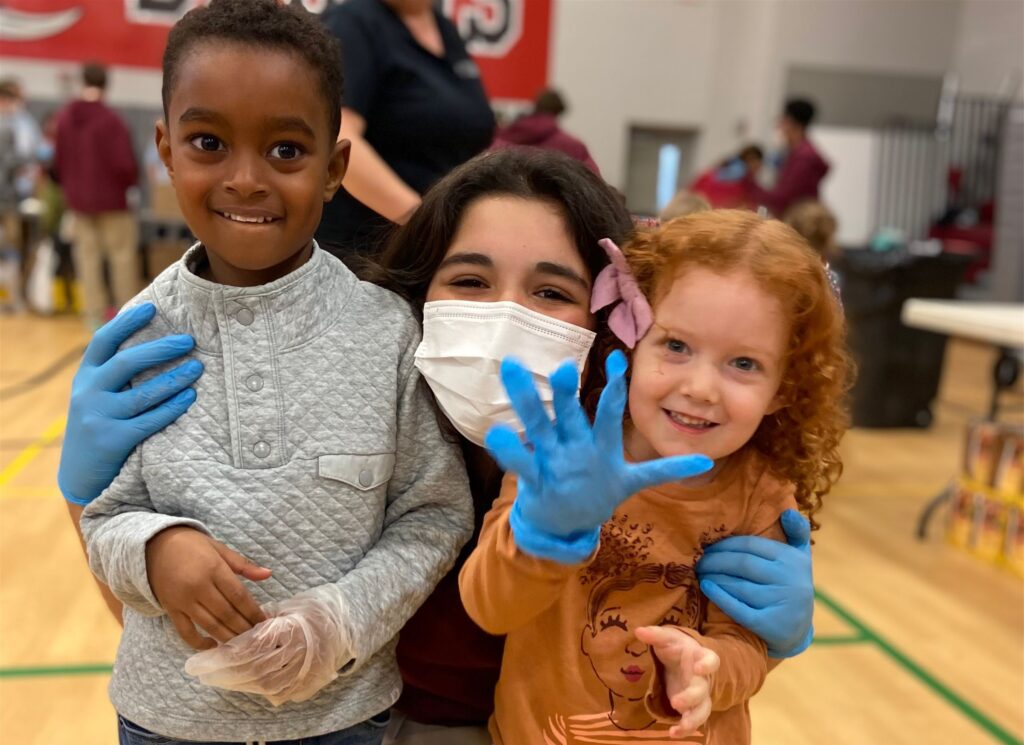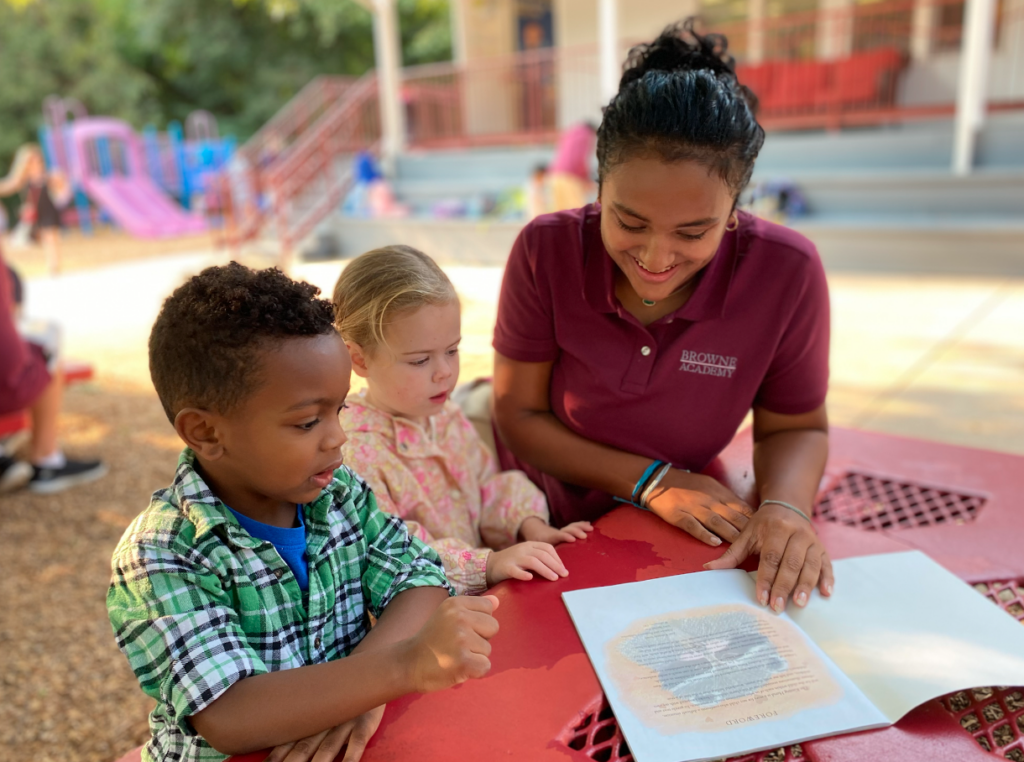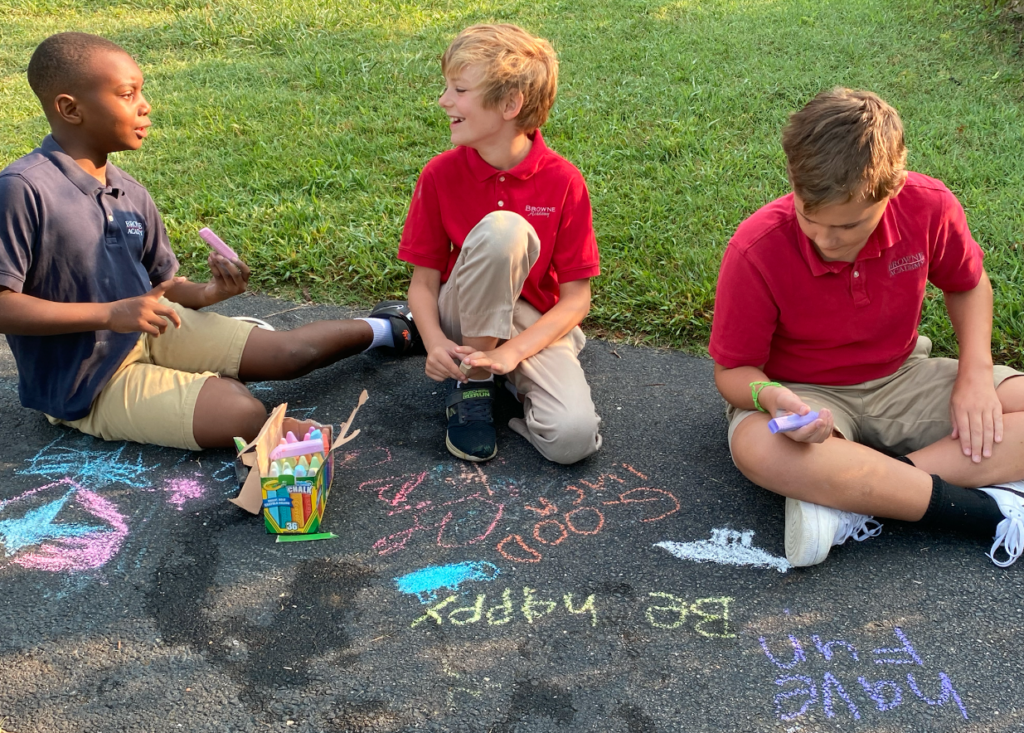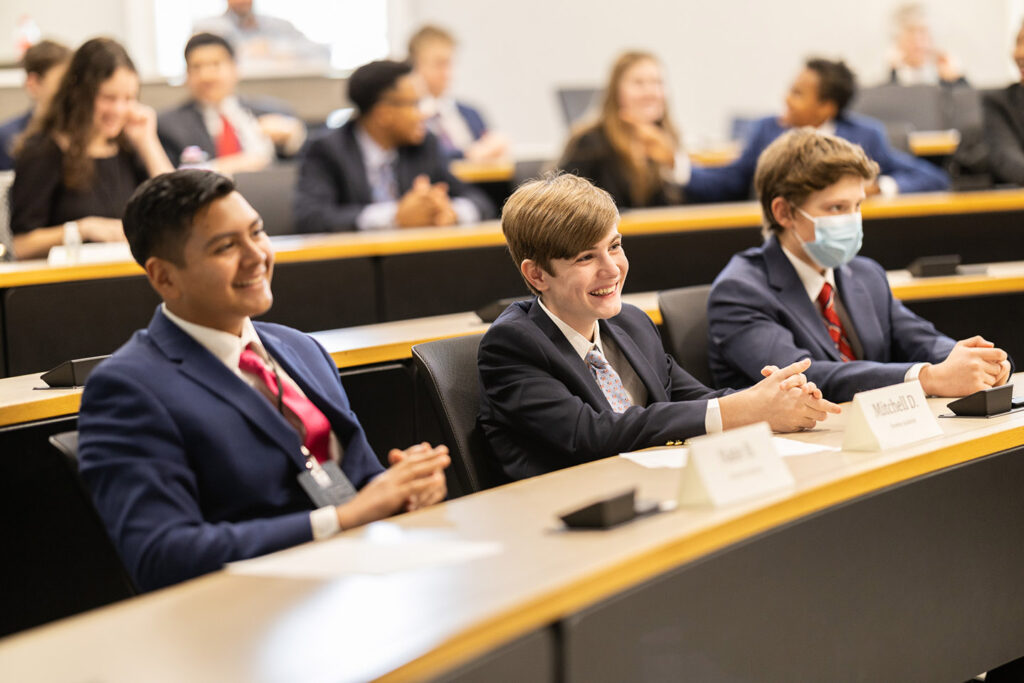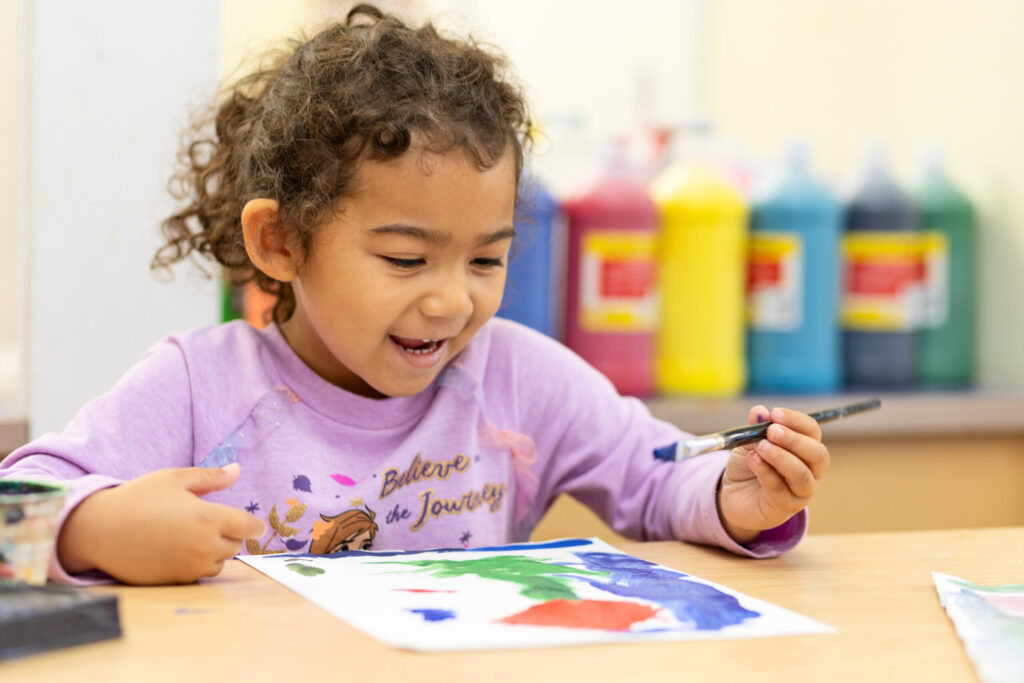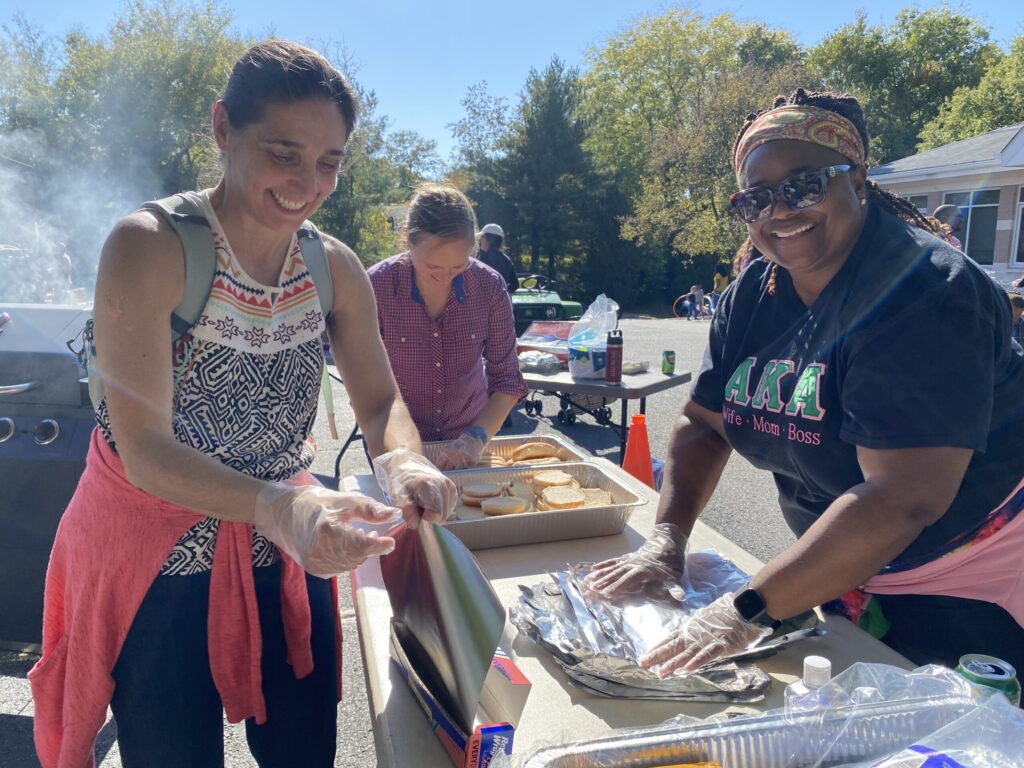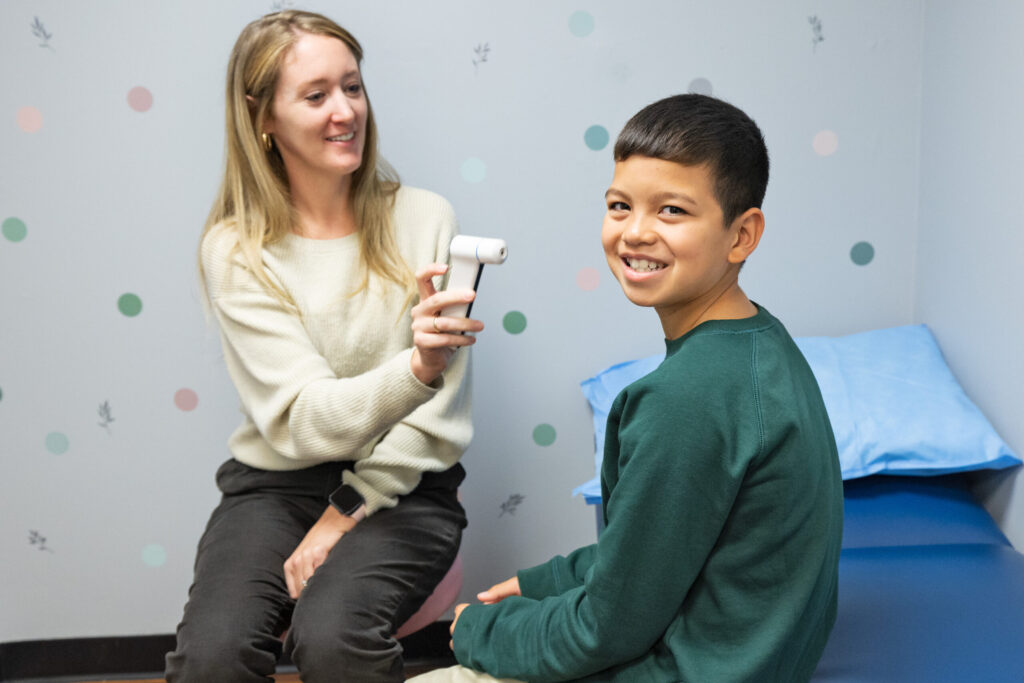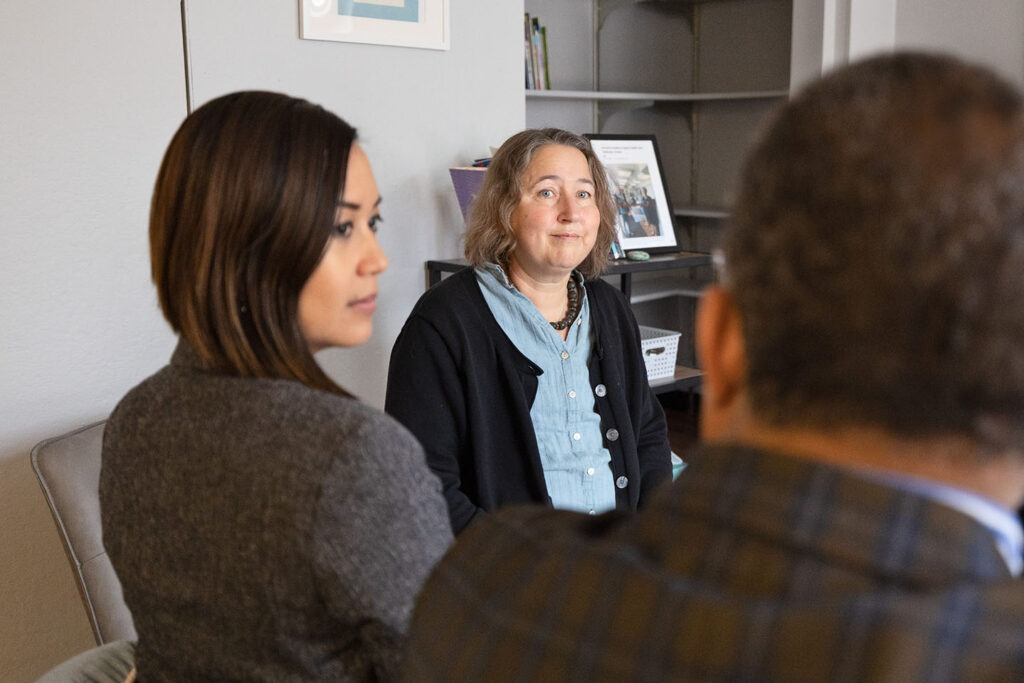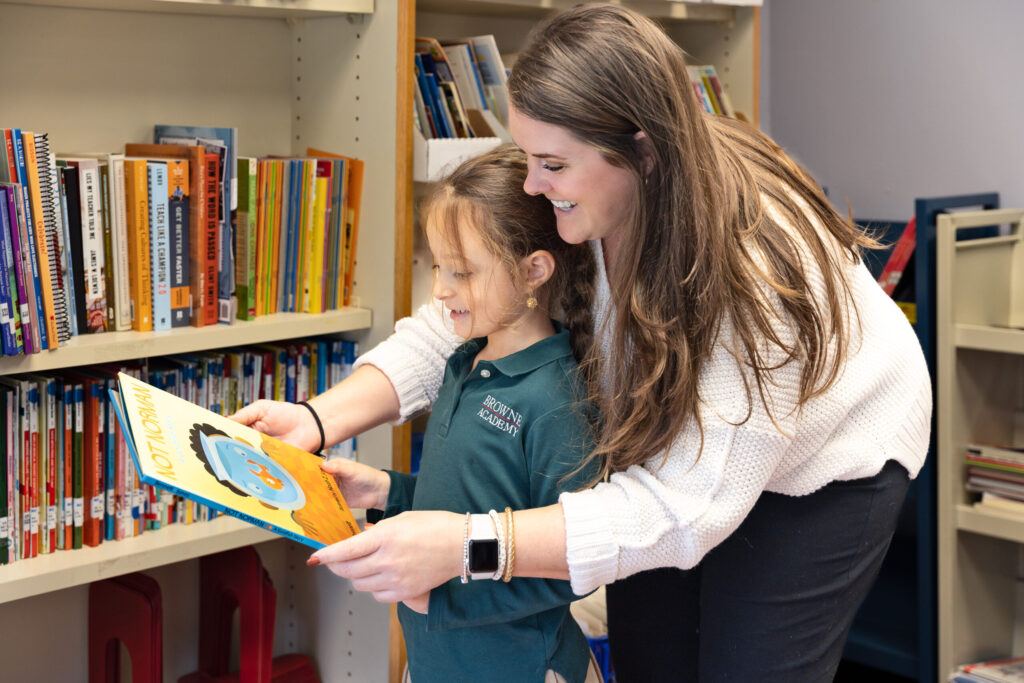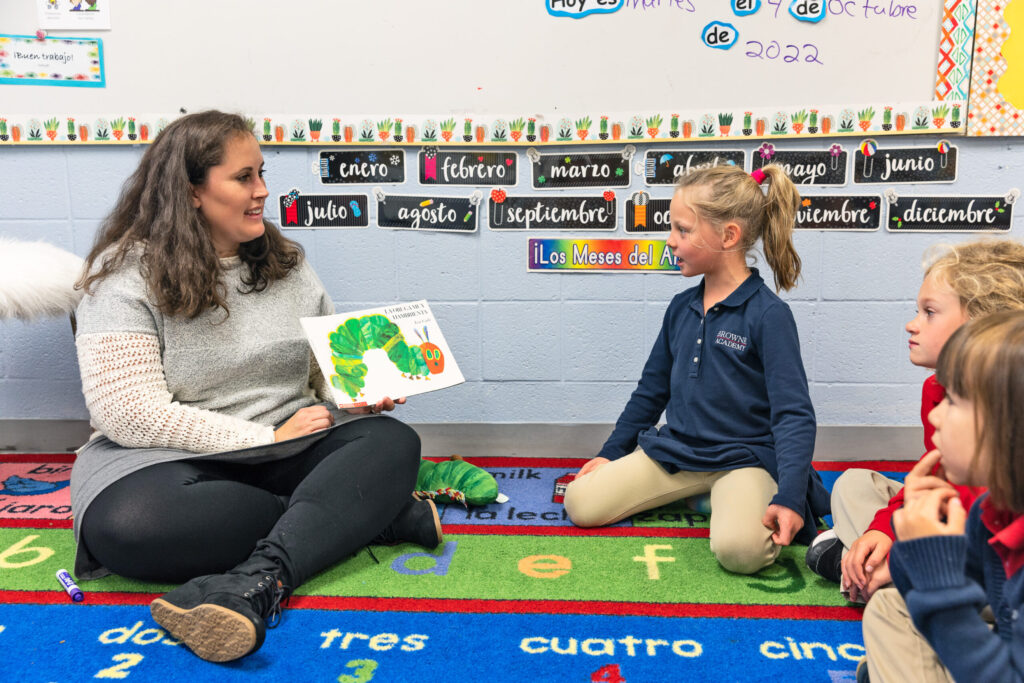The Science of Reading!
December 8, 2023
Students aren’t the only ones learning and growing at Browne! Over the past few years, our Lower School faculty has intentionally and carefully pivoted our instruction to implement the Science of Reading. As the brain science of learning to read becomes more available, teachers are adapting to improve instruction for every child.
Using a combination of the Open Court literacy curriculum and Orton Gillingham methodology, students are learning phonics systematically and structured. Each day, there is consistent practice, and students use tools that may look traditional, like notebooks and charts, but also multi-sensory tools like sand, playdough, blocks, and other manipulatives that connect all parts of their brain during literacy learning. While many adults remember memorizing spelling words for the week just to put them on the test and forget, Browne’s teachers carefully teach spelling rules and features that students can apply to words across the English language. Students master phonics features in the younger grades. They can then apply what they’ve learned to more prominent words through syllabication, change meaning with prefixes and suffixes, and use root words to build strong vocabulary and grammar. Throughout the lower school, students build complex skills based on their strong phonetic foundation.
Teaching students to use phonetic knowledge to decode takes the guesswork out of reading and ensures accuracy. While students can use picture clues and background knowledge to help with comprehension, if a word starts with ‘sh’ and the picture includes both a ship and a shark, the wrong guess could create many problems for that reader! Research-based instruction ensures that students learn to read and write as effectively as possible and helps teachers identify and support students who struggle in these areas.
When visiting Browne Academy, families might see students silently looking at books on the classroom carpet, or they could see students writing on dry-erase boards, or they might see children hopping up and down, singing and clapping to a song! All these can be part of learning to read and write, and our amazing teachers make it fun.
